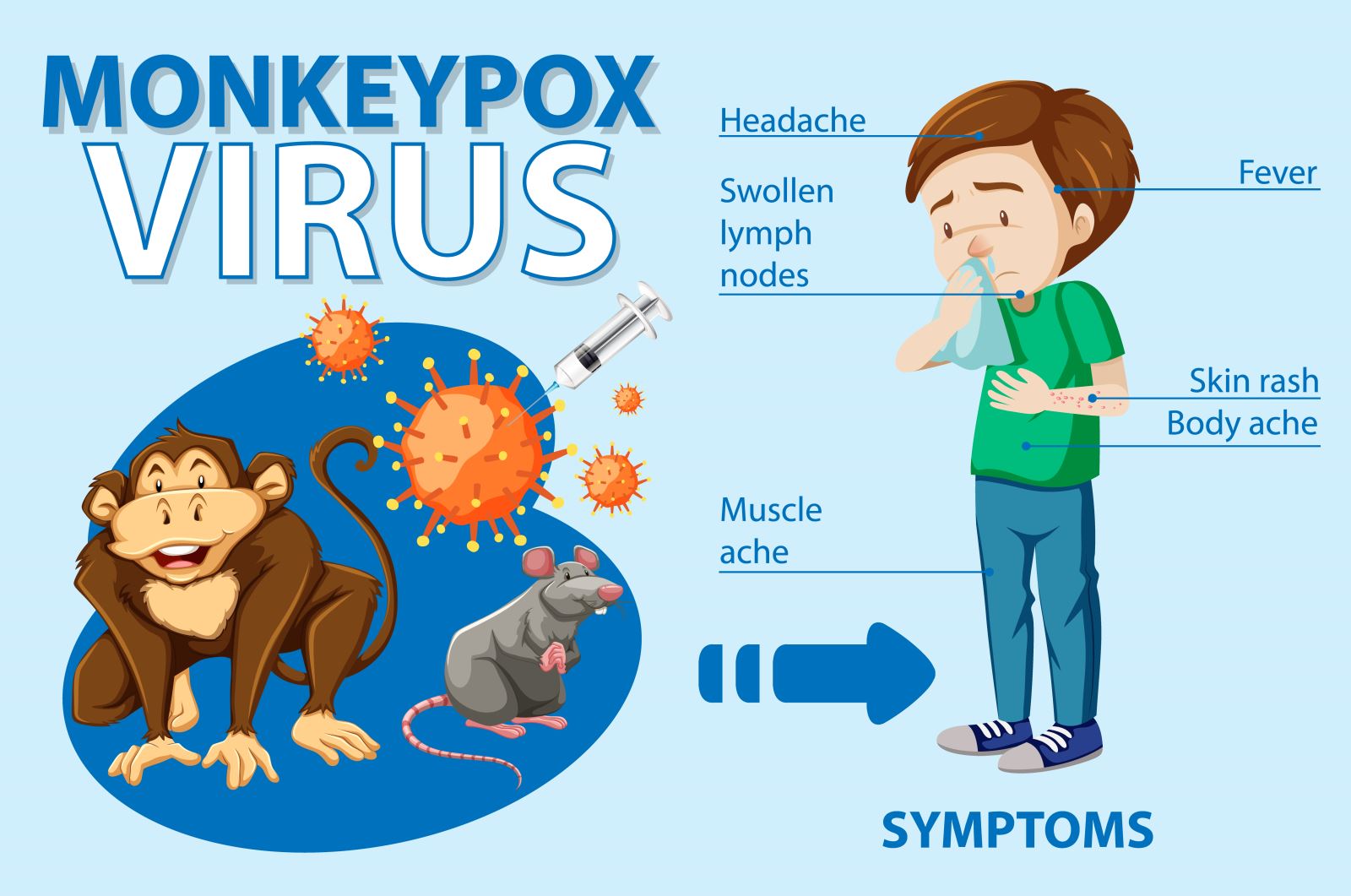After more than two years of the Coronavirus horror, another virus has hit the headlines all over the world, leaving people wondering whether this is the beginning of a new outbreak.
What is Monkeypox?
Monkeypox is not in fact a new virus; it is a viral zoonosis, which is a virus transmitted to humans from animals. It is a member of a family of viruses, such as smallpox and chickenpox; it is caused by the monkeypox virus. However, it is not as severe as the other viruses in its family, with low chances of infection. What is known for now is that certain animal species can carry the virus and transmit it to humans. These animals include non-human primates, tree squirrels, dormice, rope squirrels, and Gambian pouched rats.
Human infections of the virus have been reported in 11 African countries since 1970. However, monkeypox is not only affecting Central and West Africa; it is a disease of global public health importance and affects the whole world as well—the World Health Organization (WHO) calls it a “real risk” to public health. Outside Africa, the first monkeypox outbreak took place in the USA in 2003, where over 70 people were infected.
Some cases have also been reported in other spots of the world, such as travelers from Nigeria to the United Kingdom in September 2018, December 2019, May 2021, and May 2022, Singapore in May 2019, and back to the USA in July and November 2021. Nigeria has experienced a huge outbreak since 2017, resulting in 2oo confirmed cases and 5oo suspected cases with a case fatality ratio of nearly 3%; up until now, cases continue to be reported.
More studies are currently being conducted for more understanding of the sources of infection, transmission patterns, and epidemiology.

Credits Chimp vector created by brgfx - www.freepik.com
Infection
The virus can enter the body through blood, eyes, nose, broken skin, the respiratory tract and mouth. Zoonotic transmission (animal-to-human) can happen as a result from direct contact with body fluids, blood, cutaneous or mucosal lesions of infected animals. In the case of human-to-human transmission, close contact with contaminated objects, respiratory secretions, or skin lesions of an infected person can lead to catching the virus.
Symptoms and Signs
Symptoms include swellings, headaches, fever, aching muscles, and back pain. A rash can develop after the fever breaks, and it often starts on the face, making its way down to other parts of the body, the most common of which are soles of the feet and palms of the hands.
The infection usually goes away on its own in 14 to 21 days. However, the rash could be really itchy or painful; it goes through different stages until it finally forms a scab and falls off on its own. The lesions can also leave scars on the body.
Treatment
There are a number of methods to treat monkeypox, some of which are antiviral drugs and vaccination against smallpox, which has proven to be effective by 85% in preventing monkeypox virus.
Check this video for further information
Updates on 7.9.2022: Egypt detects first monkeypox case
References
www.bbc.com
www.who.int
Cover image: Background vector created by brgfx - www.freepik.com